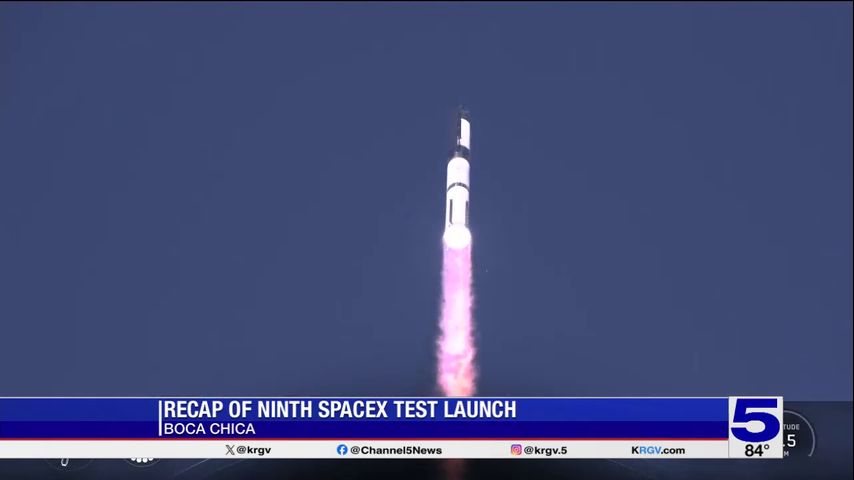Starship’s 9th launch test ends with rocket falling apart
SpaceX headed into their 9th Starship launch on Tuesday evening with new goals.
SpaceX Engineering Manager Jeese Anderson said the company reacted to the explosion from the previous launch by sharing their safety coordination with multiple agencies and countries in the Caribbean.
Tuesday’s launch would stress the vehicles even more.
“We're looking to make our first re-entry with our latest iteration of ship while intentionally stressing the superheavy vehicle during its return to get data on its boundaries,” Armstrong said.
The plan for the booster system was to activate fewer of its onboard engines to simulate an onboard problem, and to intentionally end that booster test in the Gulf of Mexico.
Following a successful launch from Starbase, the booster did its job and separated from the rocket within three minutes into the flight. It then started its descent from more than 100 kilometers in the atmosphere.
News then came in that the booster had an issue and would not have a controlled descent.
Nine minutes into the flight, the upper stage Starship was fully in its suborbital trajectory.
Then the Starship started showing issues.
SpaceX shared the news that the Starship lost control, and was “expected to see it begin to demise on its way back down to Earth."
As the rocket endured the extreme heat and plasma of a rapid descent, it started falling apart.
SpaceX said Starship experienced a “rapid unscheduled disassembly.” The company said they will review the data from this flight and try again, with its future goal of a full orbital flight.
Watch the video above for the full story.





